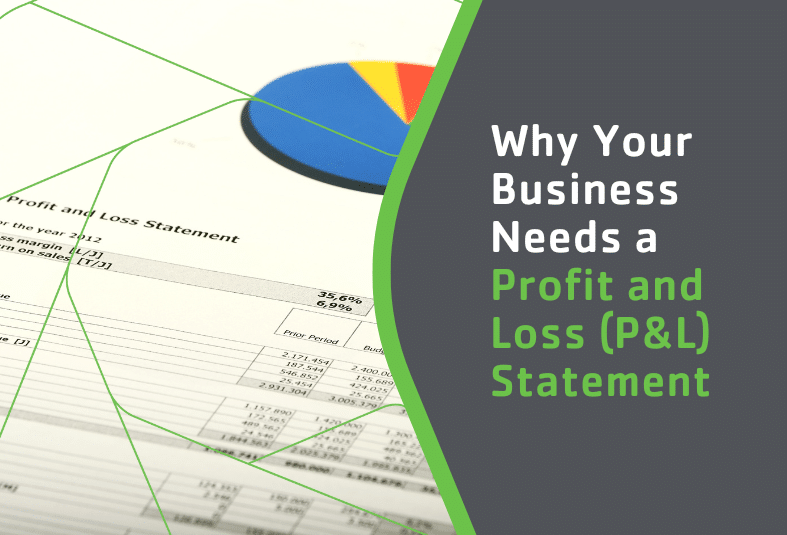Dive into the world of Profit and Loss Statements. Learn how these financial snapshots can guide you to smarter spending, revenue growth, and a deeper understanding of your business’ performance over time.
Key takeaways:
- It can help identify where you’re overspending.
- It can help you find ways to boost revenue.
- It can show you how your business is performing compared to previous periods.
- It can help you forecast future cash flow.
- It can help you get a loan or line of credit from a lender.
Table of Contents
What is a Profit and Loss (P&L) Statement?
A Profit and Loss (P&L) Statement is a straightforward way to summarise expenses and income during a period of time. These profit and loss statements help business owners understand the financial health of their business.
A profit and loss statement may also be referred to as an expense statement, income statement, earnings statement, statement of operations or statement of financial results or income.
P&L reports are different from balance sheets, in that a balance sheet only tells you about a business’ financial status at a particular point in time. A P&L statement provides more visibility into operating costs, revenue and earnings over time minus your expenses for a set period.
Here’s a breakdown of the key components of a typical P&L statement:
- Revenue (Sales or Income): This is the total amount of money your business earned from its primary operations. It includes income from sales of products or services.
- Cost of Goods Sold (COGS): COGS represents the direct costs associated with producing the goods or services you sell. This includes raw materials, labour and manufacturing expenses.
- Gross Profit: Gross profit is calculated by subtracting COGS from revenue. It reflects how efficiently your business produces goods or delivers services.
- Operating Expenses: These are the day-to-day costs of running your business, such as rent, utilities, salaries, marketing expenses, and office supplies.
- Net Profit (or Net Loss): This is the ultimate bottom-line figure. It’s calculated by subtracting operating expenses from the gross profit. A positive number indicates a profit, while a negative number signifies a loss.
Profit and Loss Statement vs. Balance Sheet vs. Cash Flow Statement
Financial jargon can be nuanced and confusing. Below we detail the key differences between these 3 crucial terms.
Profit and Loss Statement
A P&L statement is an account of a company’s income and expenditures (and ultimately its profit) over a period of time. P&L statements provide insight into a company’s financial position and are typically produced to the public every month, quarter or year. Investors might use this information in conjunction with a company’s balance sheet and cash flow statement to analyse the organisation’s profitability.
Balance Sheet
A balance sheet shows a company’s assets and liabilities. Assets could include cash, sales, accounts receivable, or longer-term assets like property and equipment. Liabilities might include wages payable or long-term liabilities like bank loans.
Cash Flow Statement
A cash flow statement or statement of cash flow provides comprehensive data reflecting all sources of cash flow a company receives from external investments and current operations. In addition to incoming cash, a cash flow statement also provides data on cash outflows that a company pays for, such as business expenses or investments during a specific period.
Why Your Business Needs a Profit and Loss Statement
P&L statements help provide a financial account or overview of a company’s financial health that summarises the costs, expenses, and revenue made during a specified period. Companies might generate a P&L statement for a single month, quarter or year.
Small businesses can use profit and loss statements in various ways.
Beyond mere compliance, a P&L statement serves multiple roles in the growth and sustainability of your business:
- Financial Health Check: It acts as a thermometer, measuring the profitability temperature of your venture.
- Strategic Planning Tool: It’s a crystal ball, providing insights for future financial strategies.
- Investor Attraction: Like a magnet, a healthy P&L can draw in potential investors or lenders.
- Efficiency Spotlight: It shines a light on areas ripe for improvement, whether cutting costs or boosting sales.
- Tax Preparation
How to Prepare a Profit and Loss Statement
Preparing a Profit and Loss (P&L) Statement involves gathering specific financial data about your business’ operations within a given period. Here’s what you’ll need to get started:
- Sales Revenue: Collect all revenue earned from the sale of goods or services excluding any returns or discounts.
- Cost of Goods Sold (COGS): This includes the direct costs attributable to the production of the goods sold in your company. This can involve material costs, direct labour, manufacturing supplies and any other direct costs associated with producing your product.
- Operating Expenses: These are the costs required to run your business that aren’t directly tied to the production of your product or service. Operating expenses include rent, utilities, office supplies, marketing costs, insurance, salaries of non-production staff and depreciation of office equipment.
- Interest Expenses: Interest payments made on any borrowed funds.
- Taxes: Prepare details of the taxes payable based on your business operations.
- Other Revenues and Expenses: Any other income or expenses not included in the above categories such as investment income or losses from the sale of assets.
- Transaction Records: Having detailed records of all transactions is crucial. This includes sales receipts, purchase orders, invoices, bank statements and receipts for expenses. These records will help ensure accuracy when calculating your revenue, COGS and expenses.
- Accounting Software or Spreadsheets: While not strictly necessary, using accounting software can simplify the process of preparing a P&L statement. It can help you organise your financial data and perform calculations. Alternatively, a well-structured spreadsheet can also serve the purpose.
- Accounting Period: Decide on the specific period for which you’re preparing the P&L statement. This could be a month, quarter or year.
- Access to Previous P&L Statements: For comparative analysis, having access to P&L statements from previous periods can be valuable.
Need Help With Your Profit and Loss Statement?
Focus on what you love and leave the financial details to us. With expert bookkeepers and accountants on deck, you can concentrate on the areas of your business that fuel your passion while we ensure your finances are accurately and effectively managed.
Leave your P&L Statements in our capable hands and dedicate your energy to what truly matters to you in your business. Get in touch with our team today.






















